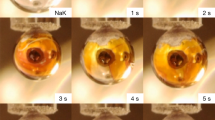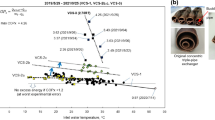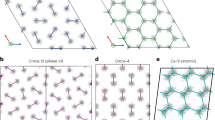Abstract
RECENTLY we wished to produce high concentrations of hydrogen atoms in flowing gas at pressures of about 0.08 mm. of mercury. An electrodeless discharge is the most suitable source at this pressure, but although several attempts were made to use such discharges maintained by microwave radiation, a stable discharge could not be obtained at pressures less than 0.12 mm. of mercury with power inputs of up to 250 W. The discharge was therefore maintained using 9.7 Mc./s. radiation from a 350-W. radio-frequency oscillator, when the method described below proved very satisfactory. About 25 cm. downstream from the discharge, the atomic concentration was 50–60 per cent. This compares favourably with most values quoted in the literature, and using microwave radiation from a ‘Raytheon’ diathermy unit at 0.12 mm. mercury pressure, fewer than 10 per cent atoms were obtained. Atomic concentrations were measured with a Wrede gauge with an orifice of 0.13 mm. diameter, the differential pressure being measured directly with a sensitive differential Pirani bridge.
This is a preview of subscription content, access via your institution
Access options
Subscribe to this journal
Receive 51 print issues and online access
$199.00 per year
only $3.90 per issue
Buy this article
- Purchase on Springer Link
- Instant access to full article PDF
Prices may be subject to local taxes which are calculated during checkout
Similar content being viewed by others
Author information
Authors and Affiliations
Rights and permissions
About this article
Cite this article
JENNINGS, K., LINNETT, J. Production of High Concentrations of Hydrogen Atoms. Nature 182, 597–598 (1958). https://doi.org/10.1038/182597a0
Issue Date:
DOI: https://doi.org/10.1038/182597a0
Comments
By submitting a comment you agree to abide by our Terms and Community Guidelines. If you find something abusive or that does not comply with our terms or guidelines please flag it as inappropriate.



